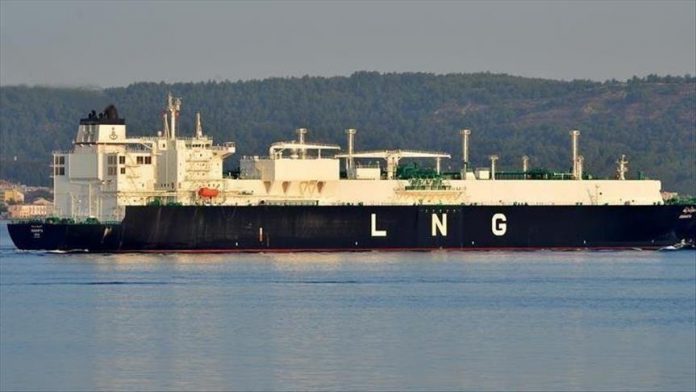Europe, which has turned to liquefied natural gas (LNG) to minimize its reliance on Russian natural gas, is running its LNG facilities at half capacity.
Last year, the worldwide LNG industry saw 380 million tons of commerce, with Europe purchasing roughly 80 million tons of it.
70% of LNG is exported under long-term contracts on the worldwide market. As a result, the remaining 30% LNG is sold on the spot market to the country with the highest bid. Many European countries that have never used LNG before are now seriously contemplating it.
Turkiye and Israel were also included in the statistics provided by the Anadolu Agency from the International Gas Association and Gas Infrastructure Europe.
When Turkiye’s LNG terminals are included, Europe, which has a total of 28 LNG import terminals, uses these terminals at half capacity. Spain is listed as the country with the most LNG terminals in Europe, with six terminals with an annual capacity of 43.8 million tons.
The United Kingdom, which has three LNG terminals with an annual capacity of 38.1 million tons, is followed by France, which has four LNG terminals with a capacity of 25 million tons, and Italy, which has three terminals with an annual capacity of 11 million tons.
Belgium, Greece, Portugal, the Netherlands, and Poland each have one LNG import facility, whereas Turkiye has two. Furthermore, Turkiye buys LNG from two floating terminals. In addition, Israel, Lithuania, and Croatia each have a floating terminal.
Small-scale LNG import facilities in Norway, Sweden, and Malta are also not included in the list of LNG import terminals.
Europe does not utilize LNG terminals to their full potential.
The annual LNG buying capacity of European terminals is currently close to 150 million tonnes.
Europe uses slightly over half of its LNG import capacity, while using LNG to cover a quarter of its gas needs. This translates to a spare capacity of 70-75 million tons.
Spain utilizes 37 percent of its capacity, the UK 38 percent, Italy 82 percent, the Netherlands 77 percent, Belgium 90 percent, France 66 percent, Portugal 70 percent, and Greece 49 percent, according to the figures.
The overall yearly natural gas demand of EU countries is from 340 to 350 billion cubic meters. EU countries purchased 140 billion cubic meters of gas and 15 billion cubic meters of LNG through pipelines from Russia last year.
In 2021, Russia supplied almost 40% of the EU’s total gas consumption.
New terminals are in the works.
In the future years, Europe intends to construct 26 new LNG facilities.
Germany, which does not currently have any LNG terminals, will build 2 LNG terminals. France and Spain will add five units to their existing LNG terminals. Ireland 3, Estonia 2, Croatia, Finland, Denmark, Poland, Ukraine, Malta and the United Kingdom will each build 1 LNG terminal.
Many LNG projects were planned in previous years but could not get enough investment, but after the war between Russia and Ukraine, LNG is expected to be on the agenda more in the coming period.

